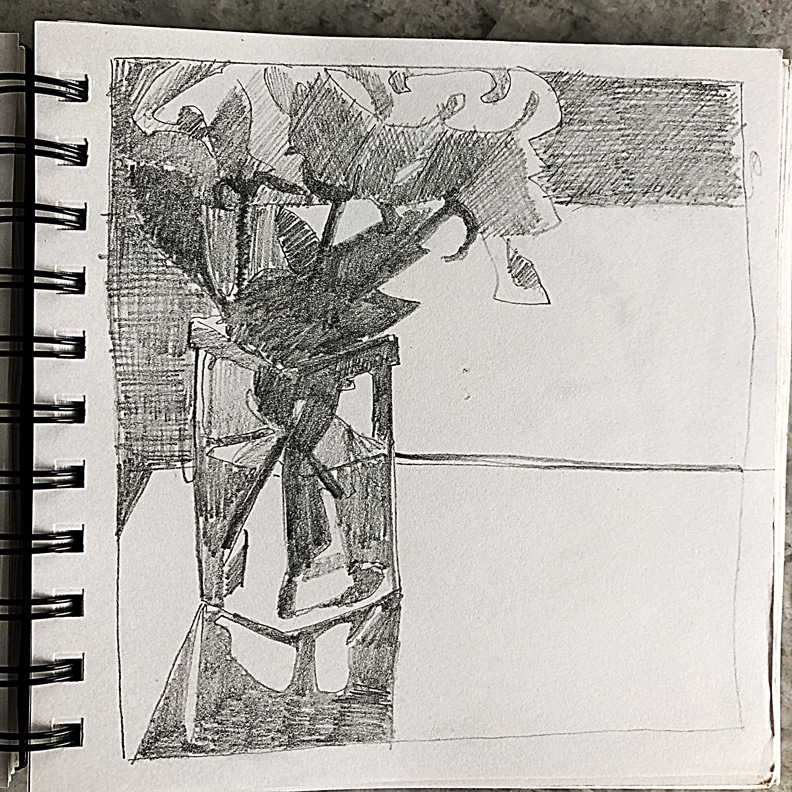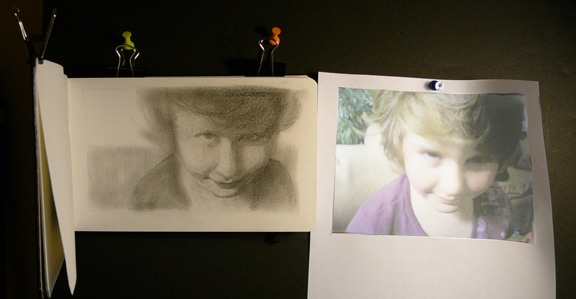Painting with Watercolors in a Sketchbook
You can paint with watercolor and get good results when your Moleskine notebook is made with watercolor paper. If your Moleskine notebook is a standard sketchpad, the paper is made for sketching and dry media. But read on for an example of an artist using Moleskine sketchpads for remarkable watercolors anyway!
If you want to experiment with wet media like watercolor or watercolor pencil – especially as a beginner – it’s a good idea to get acquainted with your paints, on papers they were meant to be applied to. At least until you get handy with watercolor as a medium.

Why Paint Watercolors on Watercolor Paper?
Painting with wet media on sketch paper, or drawing paper, or printer paper won’t help you understand what your pigments are capable of. As a beginner, your goal is to grow your skills. You aim to learn how watercolors will layer, and blend, or lift to lighten, or bloom wet-into-wet, and granulate, or mix beautifully on watercolor paper.

Switching Art Supplies is Hard
Wil Freeborn is a fabulous painter and illustrator based in Scotland. He paints with watercolor in Moleskine sketchbooks. Since the paper is not meant for watercolor, he’s learned to adjust his application to work beautifully on those pages. He writes in this post that working to master watercolor on sketch paper made switching to watercolor paper a challenge.
I use watercolour pretty much all the time in Moleskine sketchbooks. They react pretty strangely to watercolour almost repelling the paint so you have to work in washes almost scrubbing the paint into the page. From what is kind of a negative thing, I’ve got into painting this way and enjoy the results. So, now I’m trying to do watercolour on proper paper and finding it really difficult.
Will Freeborn

Feed Your Art Brain with Familiars
When athletes, musicians and writers work to sharpen their skills, sameness builds competence. Artists are no different. Consistency across your entire art-making practice is key to accelerating your growth and success.
Keeping your palette laid out in the same sequence of colors develops muscle memory. Dipping your brush to collect yellow vs a blue grows as familiar as buttoning a shirt.
Sitting at the same table, with your same paper, brushes, and palette of colors lets you focus on skills, rather than learning new materials + new skills all at once. Keep your rinse water, palette and painting surface in the same arrangement to trigger your brain each time you sit in that chair that it’s time to paint.

Build Your Art Supply Skills
Grasp the same brushes, mix the same paints and work on the same paper. You’ll increase familiarity and skills with those tools. You want to build your art-making acumen on top of the last session, and the one before that. Each art-making hour accumulates like layers of topographic knowledge. Learning new brushes, random paints and different paper every time you sit down to make art will slow the advance of your painting skills. Too many new tools is a cascade of overwhelm.


Watercolor Paper vs Sketch Paper
When you paint watercolors on regular sketchpad paper, the pigment often sinks into the paper’s pulp very fast. This dulls your colors, so you don’t get a feel for their saturation levels on watercolor paper, where absorption is blocked by sizing.
Watercolors on sketch paper will bleed through to the back, and travel past the boundaries where you applied your brush. The moisture will ripple the paper (see below) into peaks and valleys that cause pigment pooling.
Painting watercolors on sketch paper makes watercolors frustrating, and we don’t need that now, do we? I don’t think so either.



The Right Art Supply for the Job
Watercolor paper is manufactured to handle water and pigment. (If you want all the details on watercolor paper, <–get this free download I assembled for you.) Sketchpad, drawing, pastel and Bristol paper are meant for dry pigments (pencil, pastel, charcoal, etc), pen and ink, and markers.




Moleskine Watercolor Sketchbooks



Ten Tips to Stay Calm

Chaotic Seasons
We artists handle chaos pretty well. Making art gets squeezed into busy lives. Art supplies and creative spaces get organized into closet-sized footprints till they feel cozy. Making one thousand decisions about what to paint, and then how to paint it, is what we’re used to.
Juggling hats as makers, organizers, shippers, marketers, and writers is not new to us. We can fold laundry, check on an elderly neighbor, and make dinner while we’re plotting the next painting.
In this time of global fear, we can handle ourselves, because the only thing we have control over is ourselves. Take the reins of your attention, and steer yourself towards noticing the Good Things.

Make a Plan
- Clean your art-making space, and listen to some podcasts, like this.
- Try not to reinvent the wheel on distraction. Plenty of others have already figured out do-able strategies for quelling a willy-nilly mind-meander. Read this.
- If you’ve been sent home, and your job can’t be done remotely, you just got a gift of time. Garden, Sew some Placemats, Cook an Almond Cake, Draw, Crochet, Craft, Paint, Sculpt with the contents of your shredder, Embroider, edit a family video, build a blog, listen to podcasts or an audiobook while deep cleaning your home. Don’t waste precious time fretting over the news all day.
- If you’ve never taken an online art class, now might be the perfect time to give it a go. This post includes a list of online art video courses.
- Be sure the information and directions you’re reading about Covid19 are from reputable sources.
- The Centers for Disease Control has a resource page for coping during events that are overwhelming and out of our control. Take a look here.
Steer Your Own Ship
Here’s to filling time and thoughts with creativity and good things. We are all compassionate, able and resilient. We will get through this together, one day at a time. Uncap a pen, and draw something.
I’ll see you in the next post –
Belinda
P.S. This missive by the always articulate Danny Gregory really struck a chord with me this week. Do yourself a favor and read it, and then pass it on.

Art Quote
Seeing is when awareness and attention become constant and undivided, become contemplation. Seeing is not a self-indulgence, a “pleasant hobby,” but a discipline of awareness of unwavering attention to a world which is fully alive. It is not the pursuit of happiness but stopping the pursuit and experiencing the awareness, the happiness of being ALL THERE. This eye is the lens of the heart, open to the world.
Frederick Franck


As usual, very wise advice! I was only too delighted to clear my busy calendar with the prospect of a stretch of uncomplicated days. Paintings have begun and books are lined up. The Book of Gutsy Women is a good one on audio-book, read by the authors Hillary & Chelsea Clinton.
A stretch of uncomplicated days! Yes! My art brain is tossing confetti and singing from the art supply bar stool! Thanks for the note! 🧡
Okay smarty pants! As if we weren’t inspired enough by you already! I mean I just got the watercolor crayons out last night from under a few centuries of dust, and now I am going to switch paper too??!! Fine then. By the way, some of us introverts aren’t unhappy to be stuck home doing what we do best, keeping house, making art, and reading smart, heart-warming blogs by the likes of you.
Hah! I’m playing with watercolor crayons too this week! Twins! And yes, switch your paper, silly. I too am delighted at the prospect of staying home. It’s utterly glorious. Clinking my mug to yours in this season of Head-Down, Focus, Get-Things-Done. 💕 Thank you for the compliments, my Groobness.
Love this one, it’s a very powerful and compeling study. I really enjoy your blog Belinda, thanks so much for sharing with us.
That settle it! I’m burning all my moleskines! (just kidding.) This is so good though, it makes me rethink entirely how I use them.